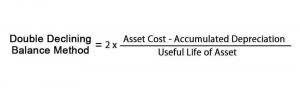Bank Reconciliation: Definition, Example, and Process

However, you typically only have a limited period, such as 30 days from the statement date, to catch and request correction of errors. This transaction results in which of the following is not a step in preparing a bank reconciliation? the bank’s assets decreasing by $1,000 and its liabilities decreasing by $1,000. These checks are the ones that have been issued by your business, but the recipient has not presented them to the bank for the collection of payment. Customer check of $1,250 deposited by Company A has been returned and charged back as NSF (not sufficient funds).

What is the Bank Reconciliation Process?

The company can now take steps to rectify the mistakes and balance its statements. That part of the accounting system which contains the balance sheet and income statement accounts used for recording transactions. Here are two examples to reinforce the bank’s use of debit and credit with regards to its customers’ checking accounts. Next, check to see if all of the deposits listed in your records are present on your bank statement. Whatever method you prefer, it’s important to https://www.bookstime.com/bookkeeping-services keep solid records of every transaction to reconcile your bank account properly. Ideally, you should run a reconciliation each time you receive the statement from your bank.
Customer ServiceCustomer Service

As businesses grow, transactions become more complex, and accurate reconciliation becomes essential for maintaining financial https://x.com/BooksTimeInc integrity. This process goes beyond balancing the books—it’s about ensuring compliance with accounting standards, detecting errors or fraud, and building trust with stakeholders. Non-sufficient funds (NSF) checks are recorded as an adjusted book-balance line item on the bank reconciliation statement. Bank reconciliation statements ensure that payments were processed and cash collections were deposited into the bank. Bank reconciliation statements are often used to catch simple errors, duplications, and accidental discrepancies.
Deductions from a cash account:
The software should now present any difference in the ending cash balance recorded by the company and the bank, along with any reconciling items, such as outstanding checks and deposits in transit. If there is no undocumented reconciling item, print the bank reconciliation and store it. In the past, it was common for a company to prepare the bank reconciliation after receiving the monthly bank statement and before issuing the company’s balance sheets. However, with today’s online banking a company can prepare a bank reconciliation throughout the month (as well as at the end of the month). This allows the company to verify its checking account balance more frequently and to make any necessary corrections much sooner. As a result, the bank statement balance will be lower than the cash book balance, so the difference will need to be adjusted in your cash book before preparing the bank reconciliation statement.
- By using software tools to automate bank reconciliation, businesses can focus on other critical tasks and make informed business decisions based on accurate financial data.
- It’s a crucial step in the revenue cycle that ensures the accuracy of financial reporting.
- If you’re finding withdrawals that aren’t listed on the bank statement, do some investigation.
- Checks which have been written, but have not yet cleared the bank on which they were drawn.
- To do this, businesses need to take into account bank charges, NSF checks, and errors in accounting.
- The bank will debit your business account only when they’ve paid these issued checks, meaning there is a time delay between the issuing of checks and their presentation to the bank.
Tips for Streamlining Your Bank Reconciliation Process
This process helps you monitor all of the cash inflows and outflows in your bank account. The reconciliation process also helps you identify fraud and other unauthorized cash transactions. As a result, it is critical for you to reconcile your bank account within a few days of receiving your bank statement.

How often should you reconcile bank statements?
- The next step in preparing a bank reconciliation statement is to identify the reason for the differences.
- The previous entries are standard to ensure that the bank records are matching to the financial records.
- It’s common for your bank statement to have a higher ending balance than your G/L account shows.
- On the other hand, the bank balance in the bank book of the company is $3,200.
- As businesses grow, transactions become more complex, and accurate reconciliation becomes essential for maintaining financial integrity.
The company carries over the balance from its bank book to its trail balance and, subsequently, its financial statements. Therefore, the bank book is an important document in the accounting process of a company. Business owners regularly compare their records with bank transactions to ensure there are no errors. It is a best practice that enables them to check that their balance sheet numbers are accurate and match the bank statement. If any discrepancies or fraudulent charges are identified, the required changes are made to the balance sheet.
